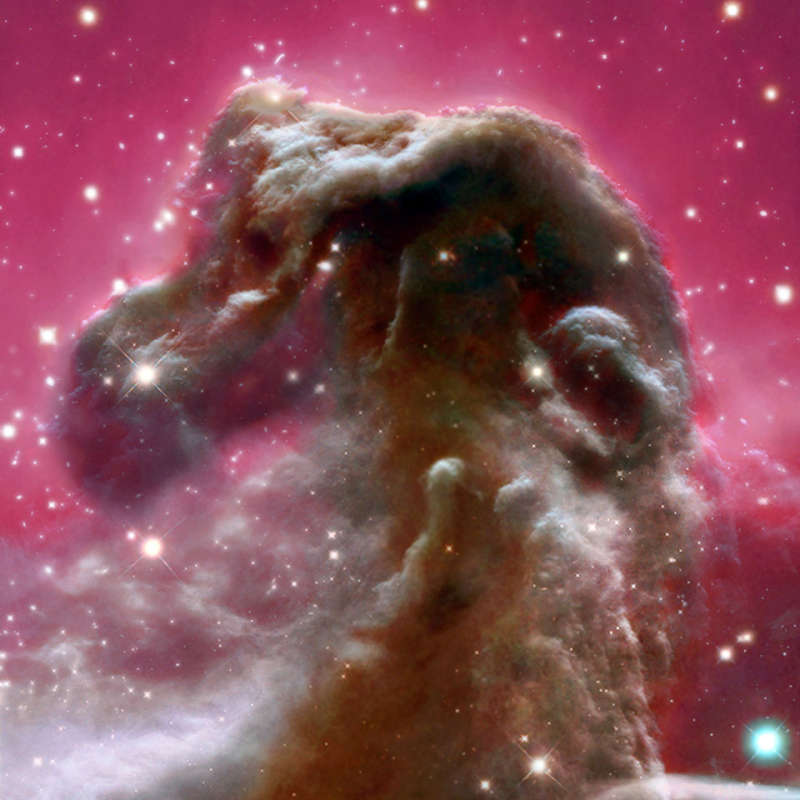 |
Астронет: Астрономическая картинка дня Туманность Конская Голова: от голубого до инфракрасного http://variable-stars.ru/db/msg/1318179/eng |
Credit & Copyright: Optical:
Aldo Mottino & Carlos Colazo,
OAC, CСrdoba;
Infrared: Hubble Legacy Archive
Explanation:
One of the most identifiable nebulae in the sky,
the Horsehead Nebula
in Orion, is part of a large, dark,
molecular cloud.
Also known as Barnard 33, the unusual shape was first
discovered on a
photographic plate in the late 1800s.
The red glow originates from
hydrogen
gas predominantly behind the nebula, ionized by the nearby bright star
Sigma Orionis.
The darkness of the
Horsehead is caused mostly by thick
dust,
although the lower part of the
Horsehead's neck casts a shadow to the left.
Streams of gas leaving
the nebula are funneled by a strong
magnetic field.
Bright spots in the
Horsehead Nebula's base are
young stars just in the process of forming.
Light takes about 1,500 years to reach us from the
Horsehead Nebula.
The above image is a digital combination of images taken in blue, green, red, and
hydrogen-alpha light
from the
Argentina, and an
image taken in
infrared light by the orbiting
Hubble Space Telescope.
Follow APOD on:
Facebook,
Google Plus,
or
Twitter
Authors & editors:
Robert Nemiroff
(MTU) &
Jerry Bonnell
(USRA)
NASA Web Site Statements, Warnings,
and Disclaimers
NASA Official: Jay Norris.
Specific
rights apply.
A service of:
LHEA at
NASA /
GSFC
& Michigan Tech. U.
